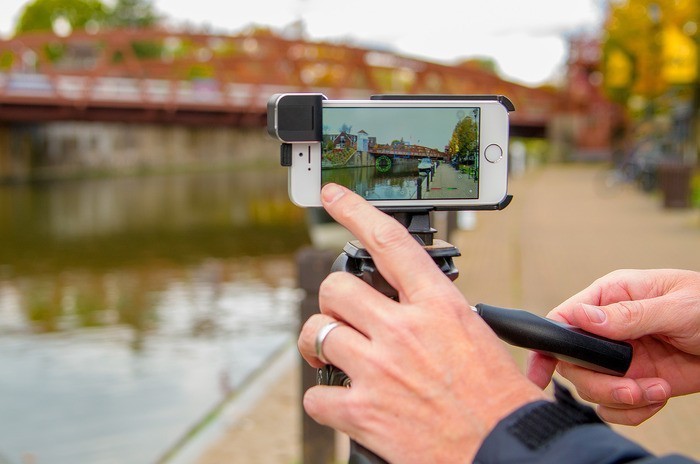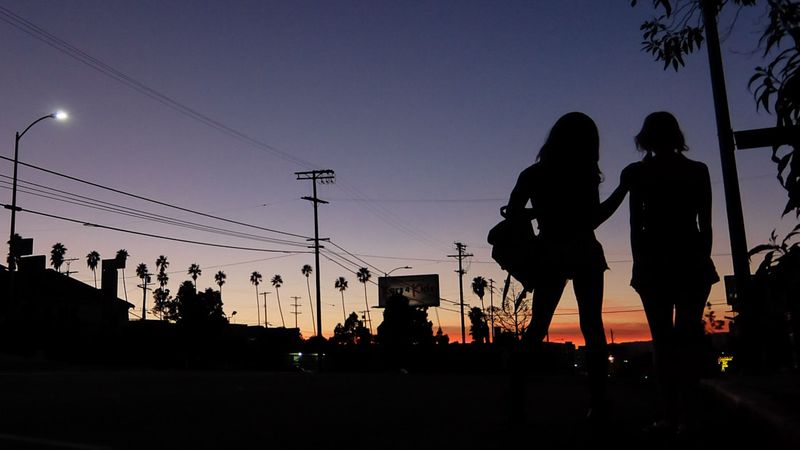Tangerine by Indie filmmaker Sean Baker, is arguably one of the most talked about films at the Sundance Film Festival this year. In addition to its non-mainstream storyline about transgender prostitutes working in a seedy part of Hollywood, the film is being talked about across a wide variety of websites because of Baker’s decision to shoot the film almost entirely on an iPhone. Of course, he used additional gear besides the stock Camera app, including a new slick-looking Moondog anamorphic lens attachment that all iPhone videographers should have in their kit.
Using non-traditional cameras to shoot television and theatrical motion pictures has been a technique filmmakers have used for years. Traditional motion picture cameras large and bulky. In order to really bring the viewer into a scene, some directors have chosen smaller, prosumer cameras more often associated with still photography. For instance, 2008’s Crank 2: High Voltage with Jason Statham was shot using Canon’s $1000 HF10 and XH A1 cameras — two prosumer models available at Best Buy and other big box stores. One of the reasons they chose these cameras over the larger, crankier (sorry about that one) Red Motion Picture camera was the Canon’s small size and ability to fit the camera into places that were too tight for the larger Red. From a viewer perspective, this can really put you into the immediacy of the shot.
Fast forward six years and the picture and video quality of the iPhone camera has improved tremendously. Again, its small size allows a director flexibility in shooting that is difficult or impossible with a larger camera.
Baker and his crew used three iPhones to shoot Tangerine. The newer generation of iPhones can shoot good quality 1080p video — that’s better than DVD quality and is considered high-definition.
They used FiLMiC Pro by Cinegenix, an excellent video app that we’ve recommended since its release, which gave the filmmakers more control over the exposure settings and tonal qualities of the raw video.
To keep the iPhone steady, they mounted the iPhones on a Steadicam. Interviewed in an article for The Verge, Baker said “These phones, because they’re so light, and they’re so small, a human hand — no matter how stable you are — it will shake. And it won’t look good. So you needed the Steadicam rig to stabilize it.”
Although the iPhone cameras now default to a wider 16:9 aspect ratio, to achieve a widescreen, more cinematic 2:35:1 aspect ratio, they used a prototype of the 1.33x Anamorphic Adapter Lens for iPhone 5/5S by Moondog Labs. Here’s a link to the adapter’s Kickstarter project, now funded and closed, that’s a really good read into the background of the project.
The Moondog attaches over the iPhone 5 series camera, much like the popular olloclip lenses. Rather than cropping the top and bottom edges of the video using black bars, the Moondog compresses the video horizontally, preserving the full height of the raw video. It’s a classic technique used in traditional film. One of the tell-tale signs are the cool, oval lens flares created as the film or video is “desqueezed.”
The all-glass optics and machined aluminum housing are designed with the indie filmmaker in mind. The Moondog is available for $160.
For more information on Tangerine and how it was shot, check out this post on The Verge.
=M=
~~~~


